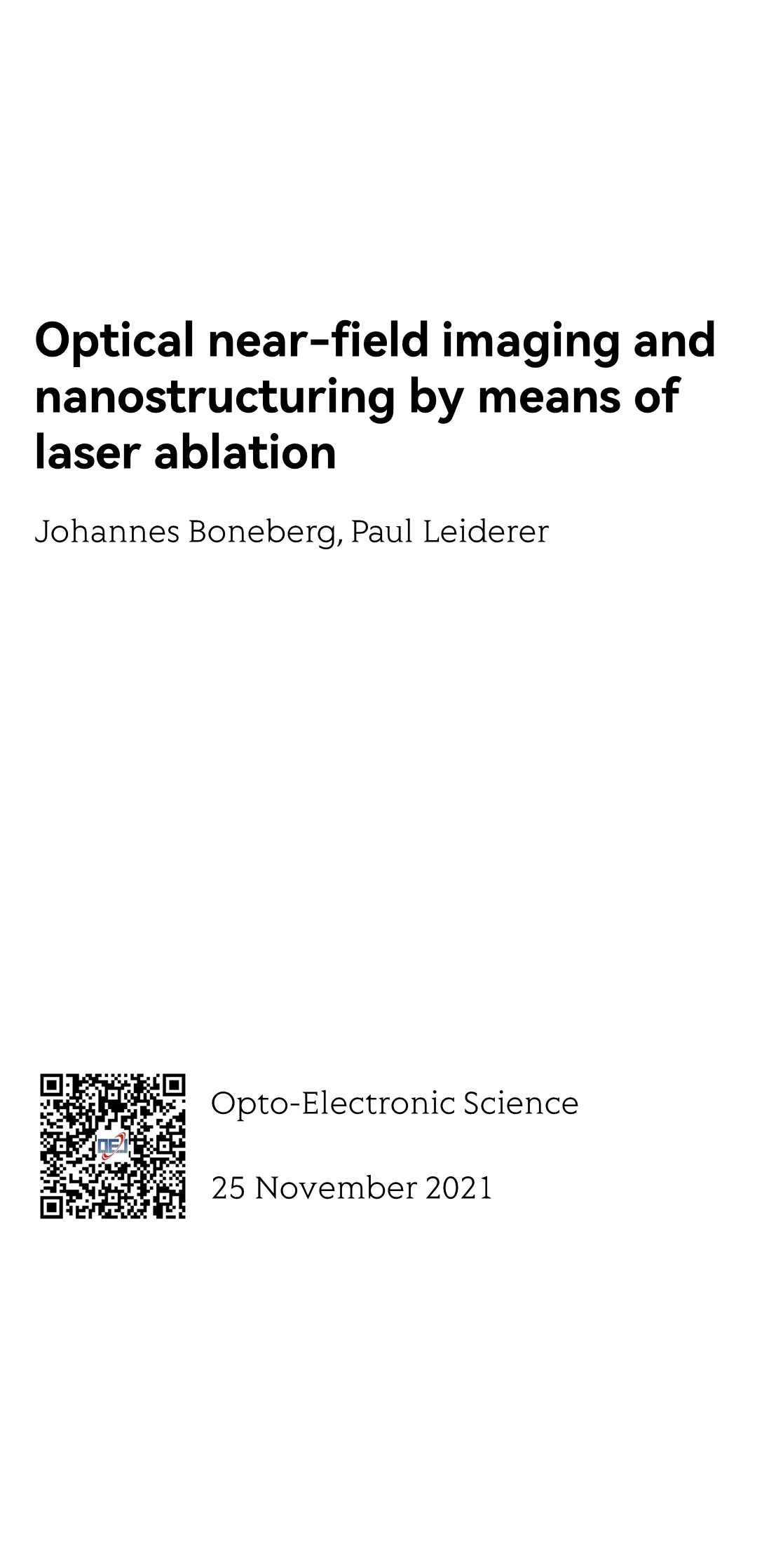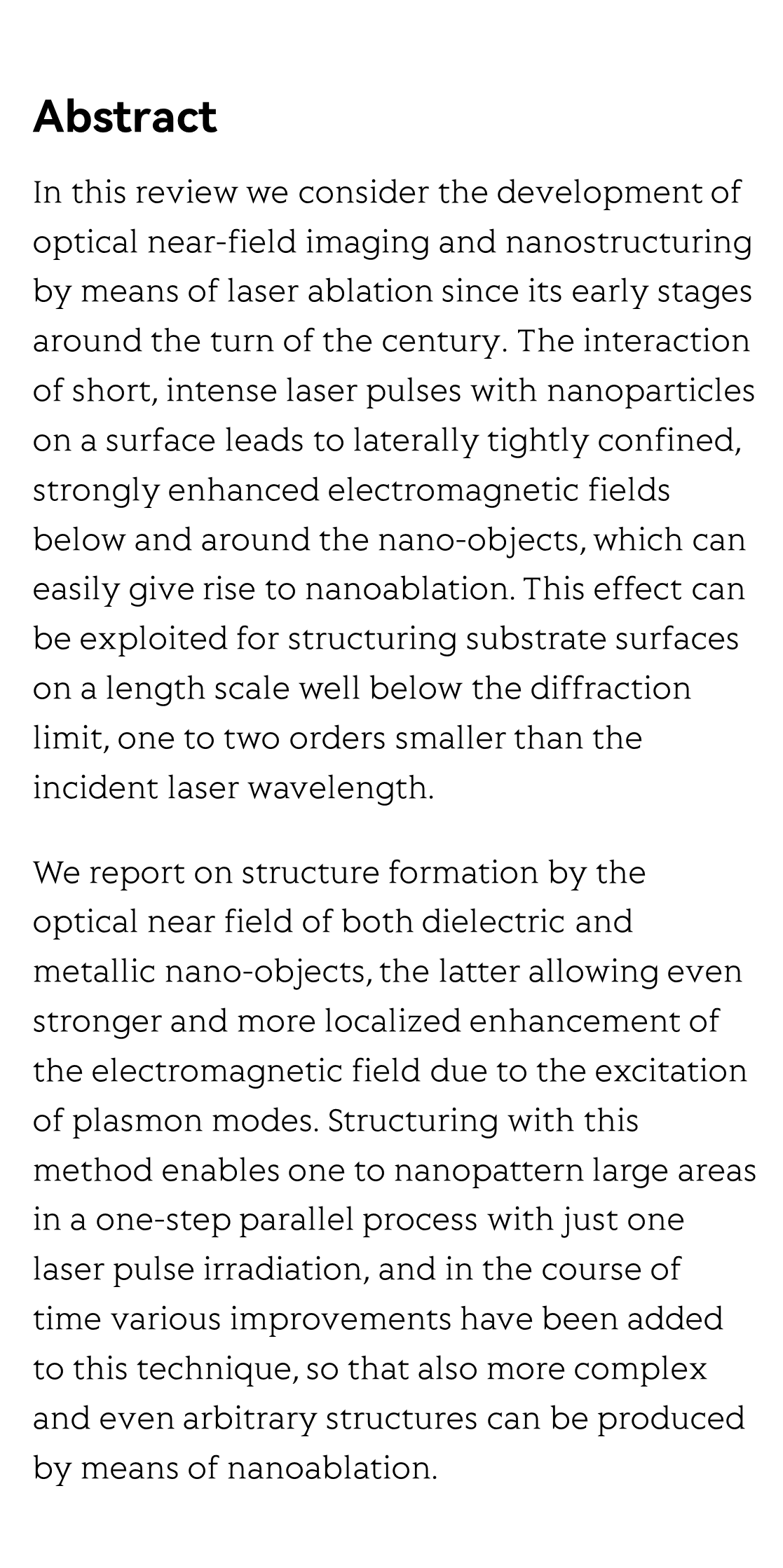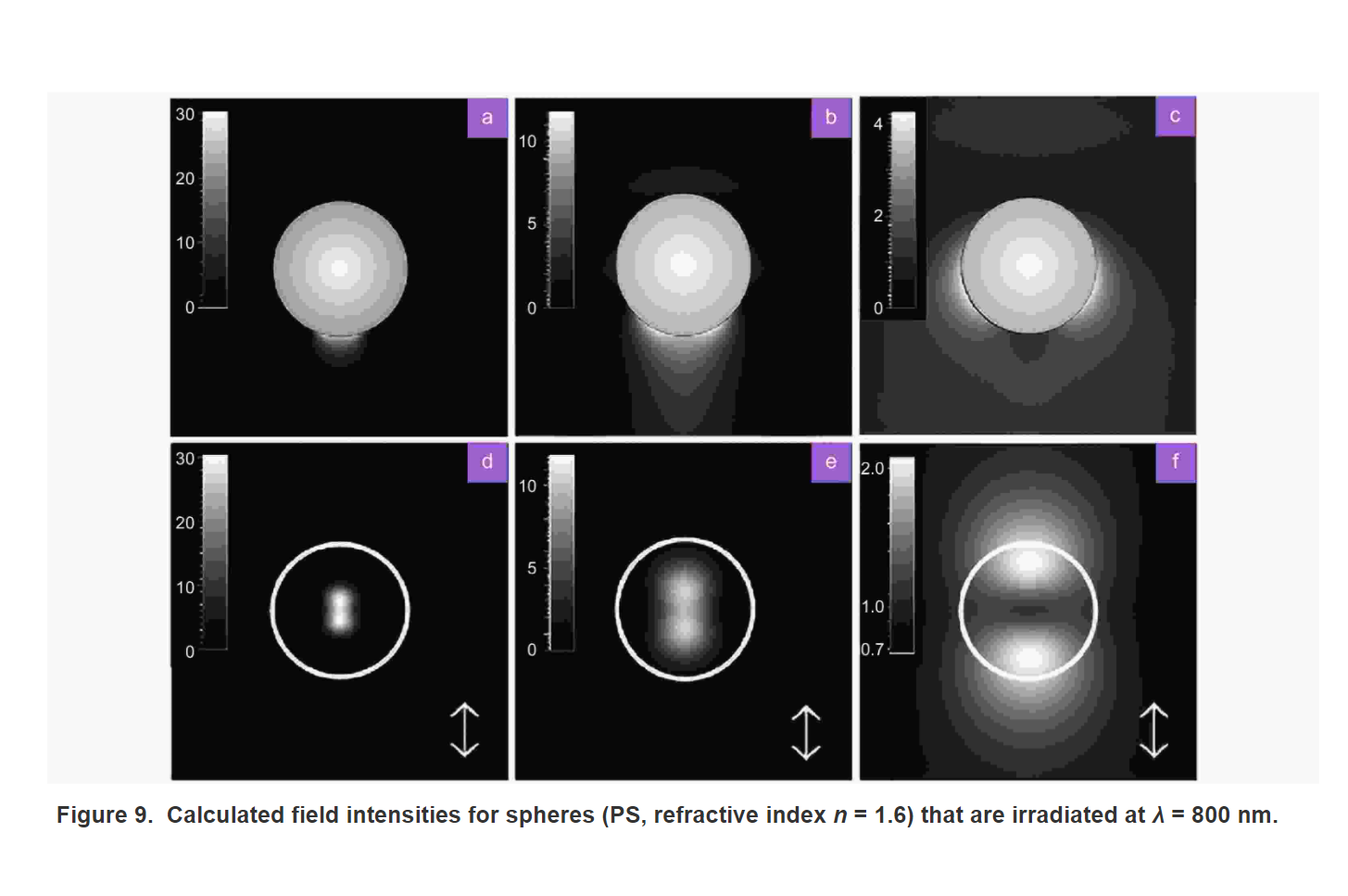(Peer-Reviewed) Optical near-field imaging and nanostructuring by means of laser ablation
Johannes Boneberg, Paul Leiderer
Department of Physics, University of Konstanz, Konstanz 78457, Germany
Opto-Electronic Science, 2021-11-25
Abstract
In this review we consider the development of optical near-field imaging and nanostructuring by means of laser ablation since its early stages around the turn of the century. The interaction of short, intense laser pulses with nanoparticles on a surface leads to laterally tightly confined, strongly enhanced electromagnetic fields below and around the nano-objects, which can easily give rise to nanoablation. This effect can be exploited for structuring substrate surfaces on a length scale well below the diffraction limit, one to two orders smaller than the incident laser wavelength.
We report on structure formation by the optical near field of both dielectric and metallic nano-objects, the latter allowing even stronger and more localized enhancement of the electromagnetic field due to the excitation of plasmon modes. Structuring with this method enables one to nanopattern large areas in a one-step parallel process with just one laser pulse irradiation, and in the course of time various improvements have been added to this technique, so that also more complex and even arbitrary structures can be produced by means of nanoablation.
The near-field patterns generated on the surface can be read out with high resolution techniques like scanning electron microscopy and atomic force microscopy and provide thus a valuable tool—in conjunction with numerical calculations like finite difference time domain (FDTD) simulations—for a deeper understanding of the optical and plasmonic properties of nanostructures and their applications.
Flicker minimization in power-saving displays enabled by measurement of difference in flexoelectric coefficients and displacement-current in positive dielectric anisotropy liquid crystals
Junho Jung, HaYoung Jung, GyuRi Choi, HanByeol Park, Sun-Mi Park, Ki-Sun Kwon, Heui-Seok Jin, Dong-Jin Lee, Hoon Jeong, JeongKi Park, Byeong Koo Kim, Seung Hee Lee, MinSu Kim
Opto-Electronic Advances
2025-09-25
Dual-frequency angular-multiplexed fringe projection profilometry with deep learning: breaking hardware limits for ultra-high-speed 3D imaging
Wenwu Chen, Yifan Liu, Shijie Feng, Wei Yin, Jiaming Qian, Yixuan Li, Hang Zhang, Maciej Trusiak, Malgorzata Kujawinska, Qian Chen, Chao Zuo
Opto-Electronic Advances
2025-09-25







